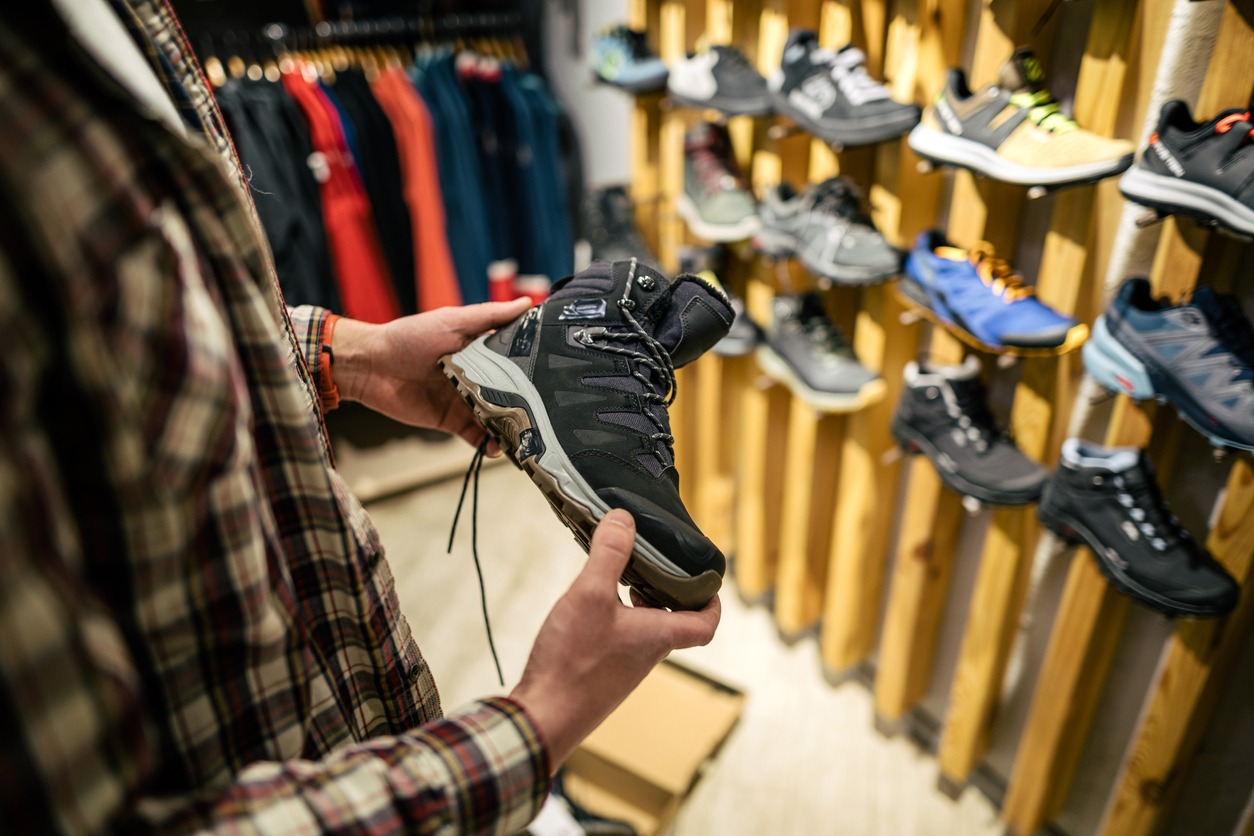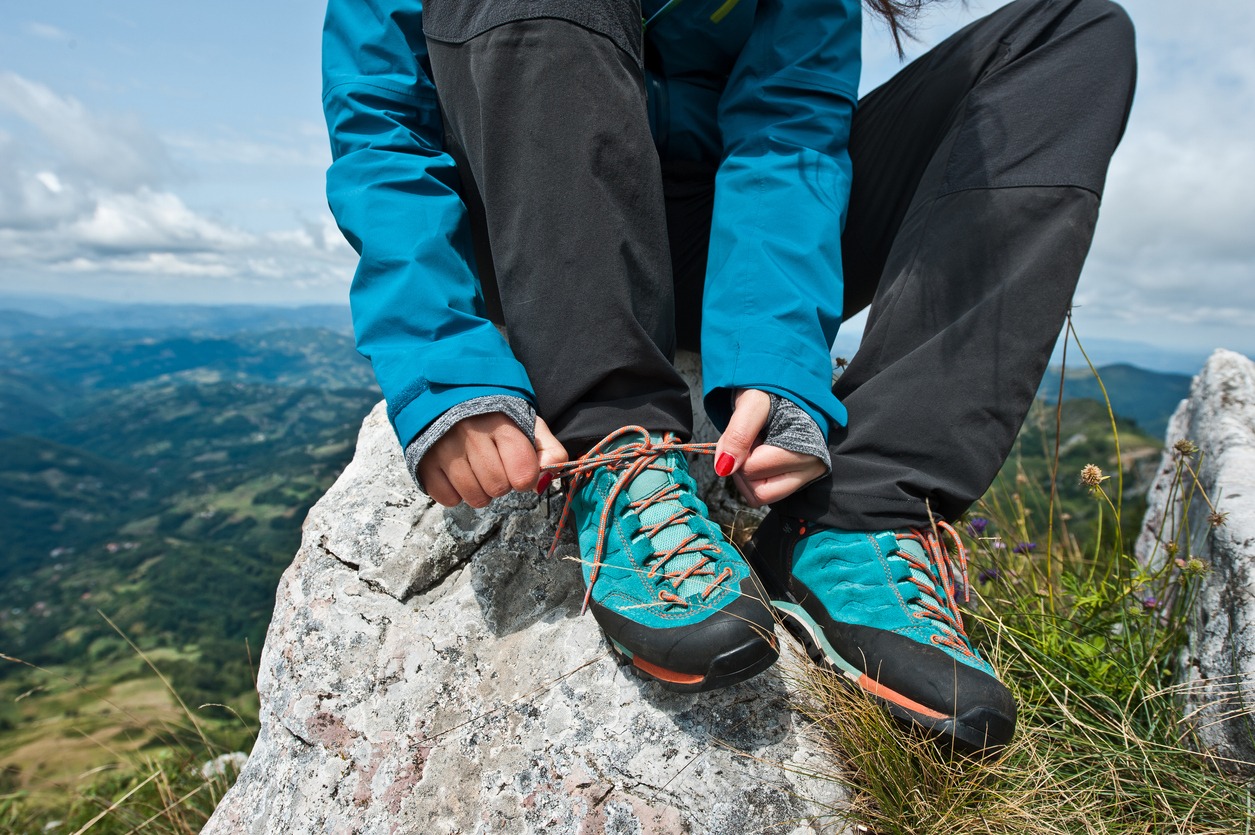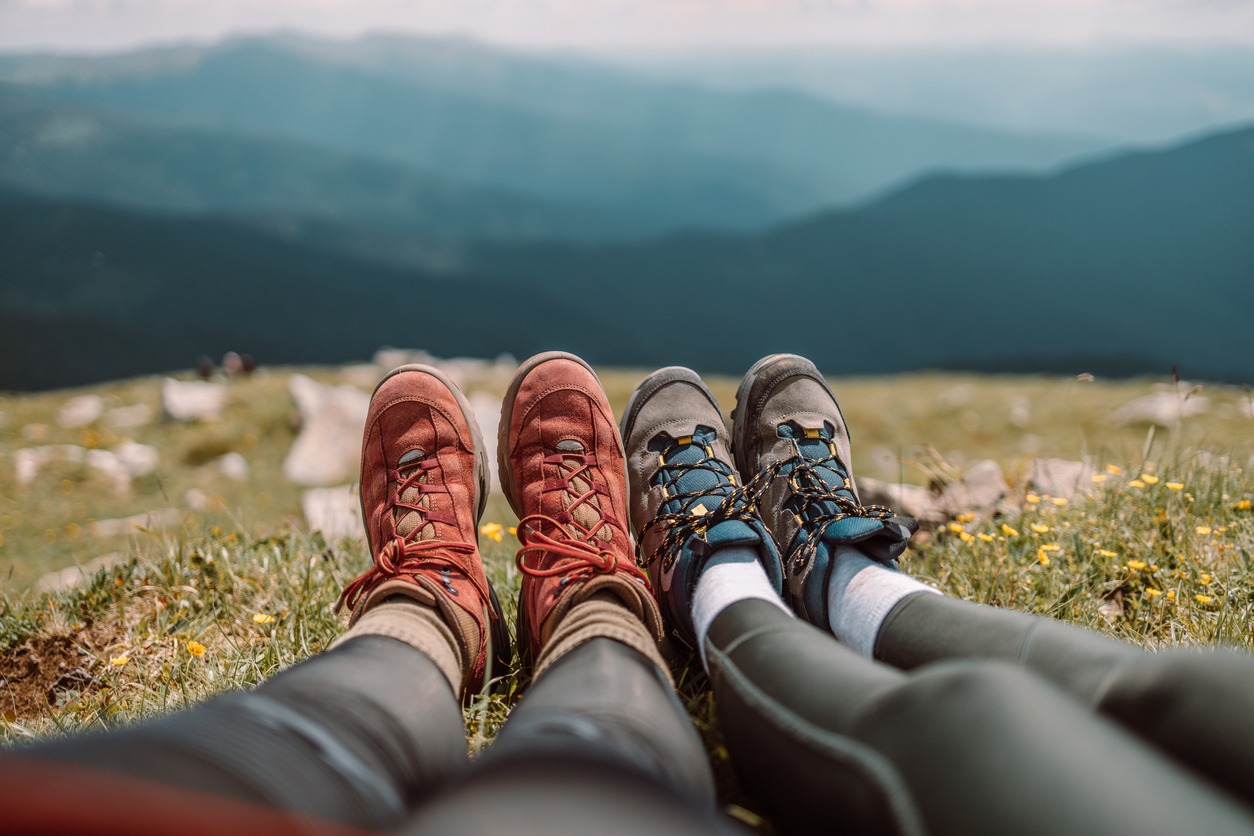A good hiking experience is only possible when you have the right gear, especially the shoes. It is important to focus on the details to get the right equipment otherwise you might end up purchasing something not right for the job. Take boots as an example, hiking can become a pain when your footwear is uncomfortable. For example, a pair of boots too tight can cause pain, while the one that is too loose may lead to clauses or blisters and make you call quits early.
Things become even trickier If you have wide feet. People with wide feet know how difficult it can become finding the perfect pair of boots. A simple solution to this problem is buying hiking boots with a wide toe box or boots made specifically for wider feet.
Hiking boots are usually manufactured in a slightly narrow design because it looks smarter and more stylish. But this creates a problem for people who have wider feet than average because, for them, the shoe becomes ill-fitting. So, it’s better to prioritize comfort over style and go for a pair of hiking boots with a wide toe box. Plus, preparing for the purchase beforehand also helps you find hiking boots that fit well. In this post you’ll find everything you need to know about picking the right hiking boots for wide feet.
Why Buy Hiking Boots with Wide Toe Box?
Hiking boots with a wide toe box ensures a more comfortable footwear experience. Not only will you feel more at ease throughout the hike, but they will also prevent blisters and clauses. Here is why wide hiking boots are a great investment for people with wide feet:
Ensure Comfort
A narrow toe box can prevent your toes from fitting and moving comfortably. With such a pair on, you might feel pinching and discomfort that makes you tired very quickly. Hiking boots with a wide toe box have enough room to let your fingers splay naturally. With them on, you don’t feel uncomfortable or tired.
Protect Your Feet
Falls and injuries are common while hiking. Many hiking related falls are a result of ill-fitting shoes that made hikers trip. Besides falls, hikers often get blisters on their feet because their footwear didn’t fit them right. You can avoid these issues by having a pair of hiking boots that fit well. With their wide toe box, these wide hiking boots will protect your feet from hiking related injuries.
Improve Your Sense of Balance
Wide-toe hiking boots improve your sense of balance by providing adequate support to your feet. Their wide toe box allows your toes to splay naturally, so your feet are firmly placed on the ground. This aspect bears more importance when you are hiking on a slope because it is easy to lose your balance while walking on an incline.
Keep You Going for Longer
Hiking is a labor-intensive activity, so you have to make sure your entire body is up for the task, especially your feet. If your boots are ill-fitting, they will make you feel uncomfortable, lowering your overall potential. Hiking boots for wide feet are designed to accommodate wider feet so you can keep going.
Preparing To Purchase Hiking Boots For Wide Feet
Purchasing hiking boots can be a stressful task for people with wide feet. You either have to buy a pair that is tight, or you compromise for the width by choosing a pair that is a size or two big. And even a pair that initially fits right may feel uncomfortable after some activity. This is not how you should go about it. If you are planning to purchase new hiking shoes, here is how you should prepare for the task:
Have Your Feet Measured
The first thing that you should do when purchasing new shoes is have your feet measured. Many shoe stores have special equipment that professionals use to measure your feet before giving you appropriate footwear to try on. You can also find foot measurement charts and guides online that you can print out and use to measure your size.
Wear Appropriate Socks
There is a difference in how the boots fit your bare feet and how they fit when you have socks on. Since you are going to wear socks with your new hiking boots, it’s better that you bring them along when you are trying different pairs.
Try the Boots at the End of the Day
Your feet swell throughout the day and are the biggest at the end of the day. They swell even more after physical activities such as hiking. Trying a new pair in the evening will ensure that you choose the most suitable pair of hiking boots.
Spend Some Time in the Boots
In addition to the fit, you also have to factor in how your feet feel inside the new boots. Spending some time in the boots is the best way to figure this out. When you put on the new pair, walk for some time wearing them in the store and try climbing some stairs if you can. Take a stroll in the store, walk up and down the stairs, and if you can find an incline, try walking on its surface.
Break In Your New Hiking Boots Before the Trip
After you have purchased a new pair of leather hiking boots, make sure to break them in. Many hikers get sore feet because they overlook this important step. Breaking in allows your new hiking boots and feet or conform with one another. This way you won’t feel any discomfort when you are on the trail.
Things to Consider when Buying Hiking Boots for Wide Feet
The right fit is the most important consideration when buying hiking boots for people with wide feet. However, there are some other aspects too including:
Fit
Choosing the right fit is the number one priority when buying hiking boots. These days, there is no need to buy a standard-fit hiking boot that is one size larger. You can choose from a selection of wide toe hiking boots to find the pair that fits right.
Material
Leather has always been the most durable material for footwear. This includes hiking shoes too. The genuine hide leather is quite stiff and requires breaking in to make it conform with your feet. These boots also have to undergo various treatments to become waterproof. Some hide leather hiking boots are also manufactured with a special membrane that makes them waterproof.
Synthetic leather, on the other hand, is more supple and lightweight, but they are not as breathable and durable and not usually the default option for hiking. Hiking boots soles are made from different materials, including Polyurethane (PU), synthetic rubber and Ethylene-vinyl acetate (EVA). Rubber or TPR is the preferred option as it’s durable and provides better traction. EVA and PU are more lightweight and comfortable, but not as durable and grippy.
Tread
Hiking boots have lugs on their soles. These are rubber bumps that grapple the ground as you walk. Deeper lugs improve your ability to walk over a variety of surfaces. However, they can also increase the weight of the boots. If you prefer deep lugs, choose hiking boots with lighter outsole material so it doesn’t weigh you down.
Ventilation
Who likes stinky, sweaty feet? Especially when they are clad in thick socks. This can happen when your wide toe hiking boots are poorly ventilated. Along with excessive sweating, poorly ventilated hiking boots also cause general discomfort that can slow you down on a hike. Make sure to purchase a well-ventilated design that keeps your feet dry and sweat-free.
Weight
Even a short hiking trip usually spans over a few hours so, you have to pay attention to the overall weight of the boots you are purchasing. Because they are for people with wide feet, wide toe hiking shoes are a bit bulky and heavy. Try to find the lightest option that you can find because as you grow weary, your feet feel heavier.
Conclusion
These days, picking hiking boots for people with wide feet is not as difficult as it used to be. There are a number of options available that you can use to find a properly fitting pair. Prepare for shoe trials beforehand and make sure to break in your new wide boots before any long hiking expedition.



